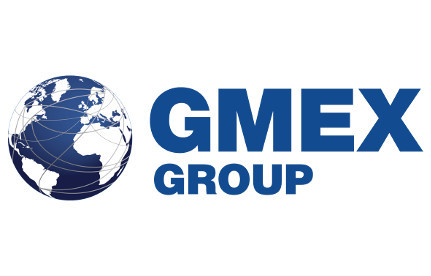Hirander Misra explores how crypto exchanges and digital custodians are joining forces to offer increased security to investors, as the market for digital assets evolves to embrace Initial Exchange Offerings (IEOs).
Initial Coin Offerings (ICOs) and Security Token Offerings (STOs) made digital assets well known to the investor community, but it has taken the advent of IEOs to truly provide credibility to this innovative marketplace.
With investors showing a marked preference for regulated digital assets, the H1 2019 report by Inwara titled, “Deciphering Token Offerings – IEOs, STOs, and ICOs,” highlights that IEO numbers shot up by over 6000% from H1 2018 to H1 2019 to encompass 123 projects. It went on to note that IEO projects year to date, have raised US$1.63 billion.
In stark contrast, the year-on-year comparison shows an increase of only 51% for STOs and a decline of 91% in ICOs.
Who are the main players in the IEO market?
A pioneer in the IEO domain, Binance launched its IEO platform Binance Launchpad in January 2019, following which BitTorrent (now part of TRON) initiated a token sale on Binance Launchpad and raised its hardcap of US$7.2 million in less than 15 minutes that same month. In February 2019, Fetch.AI achieved its hardcap of US$6 million in 22 seconds on Launchpad.
Other leading crypto exchanges have recently followed in the footsteps of Binance, including Bittrex and Huobi. Veriblock, a blockchain initiative leveraging the bitcoin network, raised US$7 million in April 2019 through an IEO on Bittrex in 10 seconds. During May 2019, the funds raised by IEO projects crossed US$1 billion but a single project (LEO Token) was largely responsible for this.
Regarding existing exchanges, given the current lack of current regulatory standards in jurisdictions such as the US and UK, there will be some uncertainty and reluctance to adopt and offer IEOs in the near term. Nonetheless, this is changing, with regulatory developments occurring faster than most would have anticipated and some jurisdictions such as Switzerland and Singapore already having active projects in this space, which will be properly regulated.
What are the main incentives for exchanges to offer IEOs?
IEOs are expected to catalyse the ability of exchanges to more efficiently trade, clear and settle multiple types of digital assets across the globe.
Beyond the listing fees and taking a percentage of the tokens, some exchanges offer incentives for participants buying into the IEOs they conduct by using the exchange’s own token. Whilst this means revenue is not generated on transaction fees, critical mass is built up in terms of the exchange’s own token due to an increase in demand for it. Besides, IEOs are also a good new revenue source for digital/ crypto exchanges with great revenue upside potential not just relating to the listing, but also in terms of secondary trading transaction fees.
At the same time, there are too many crypto exchanges offering similar types of products, which are also subject to bull and bear cycles. Over the long term, IEOs will help exchanges that manage them well to differentiate themselves from the pack and in turn create a network effect in terms of an expanding participant base.
Do IEOs address counterparty risk effectively?
Exchange sites can cancel an IEO at any time before it takes place if they discover anything untoward. This maintains their reputation. For investors, this leads to a reduction in the risk when compared to investing directly in an ICO or STO. This does not automatically mean that the project cannot be a scam, however the probability is much less. Just like an IPO on an exchange can fail, there is still a risk and investors should look at each IEO on its own merits and evaluate the risk versus reward.
Investing in crypto assets can be risky and there are often cases of exchanges being hacked or users losing wallet keys. There is currently a lack of standards both globally and in credible jurisdictions, however this is changing. Digital custodians are also emerging for safe keeping. As such the choice of venue conducting the IEO is important in terms of where and how it operates and the operational processes its runs. For example: How is digital custody undertaken? How are assets and funds kept secure?
This raises a number of questions. Most digital/ crypto exchanges today have a conflict of interest since they act effectively as the investment adviser, broker, counterparty, exchange and custodian all in one. Many also operate across jurisdictions as a form of regulatory arbitrage. There is also no defined guide on the credit rating of these exchanges. Moreover, the vetting process that they undertake is unclear as not all are as strict as they should be. Finally, there is vested interest as in the short term there is money to be made. So, as an investor, one must question where one is actually investing.
How can IEOs instil more trust and security in investors?
As exchanges become better regulated in credible jurisdictions, this issue will be addressed. There are existing traditional exchanges looking to enter the digital exchange business as well as existing cryptocurrency exchanges looking to get better regulated. Added to this, new exchange players are also emerging which have credible promoters and are looking to embrace regulation as opposed to working around it. All this augurs well for the credibility of IEOs.
Most exchanges on secondary trading expect positions to be prefunded and assets lodged at the exchange. However, as products become more complex, such as derivatives being introduced, there is a need to establish clearing guarantee funds, which evolve into central counterparty clearing houses (CCPs). These should be standalone from the exchange function even if they are subsidiaries of a partner company that also controls the exchange.
In addition, the emergence of regulated digital custodians and banks going into the digital custody business will also provide better safe keeping of digital assets. As such, these types of structures should be used to instil even more trust and security when conducting an IEO going forward.
What does the future hold for IEOs?
The market for digital assets is starting to respond to the need for credible solutions by investors with the launch of IEOs on digital exchanges and the ability to utilise digital custodians to hold such assets securely.
This will continue to gain critical mass as offerings mature and properly regulated exchanges continue to emerge with some form of clearing guarantee or CCP to address risk.



